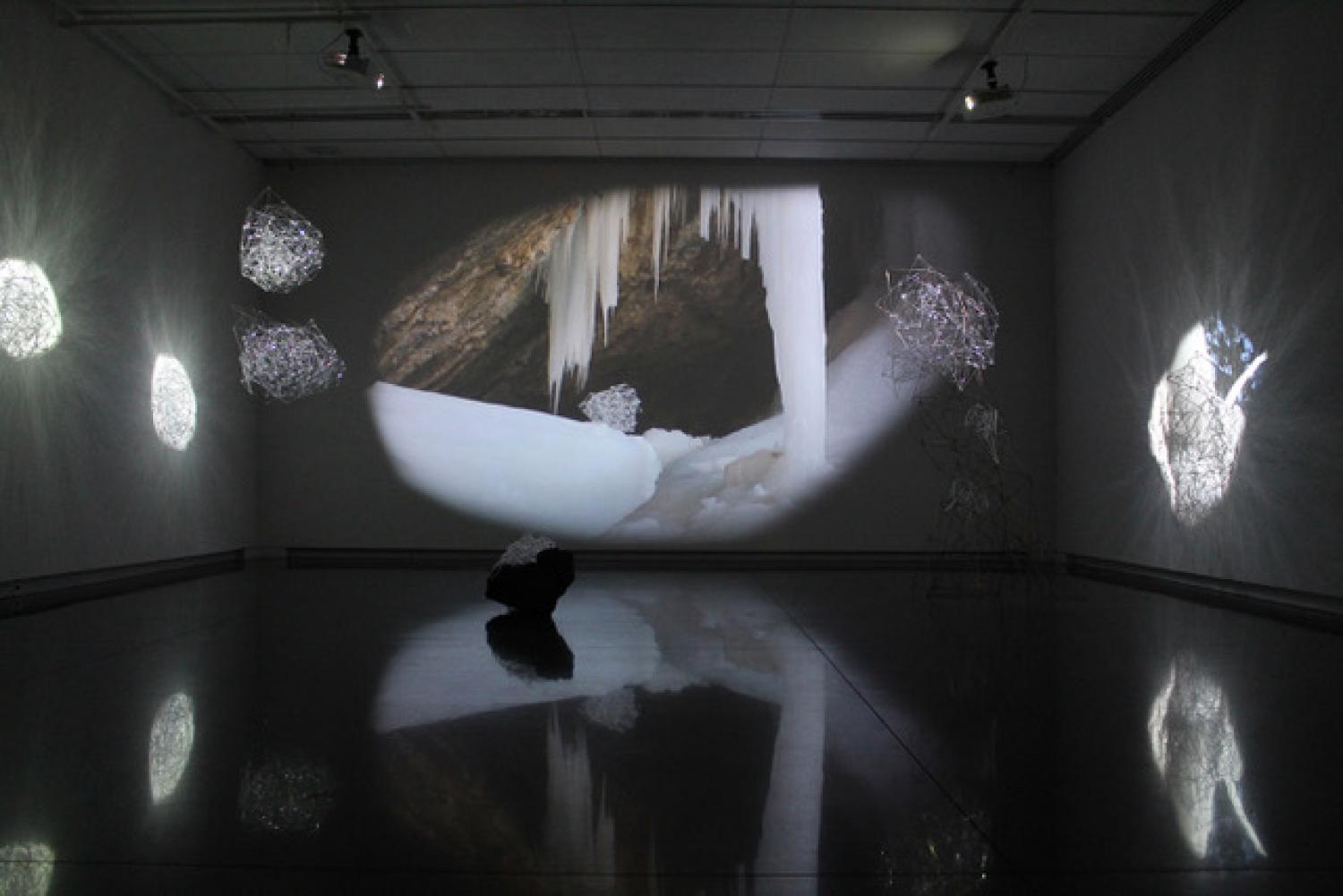Sculpture and Post-Studio Practice Alumni Conversation
AmyHoagland, MFA 2021

RS. I sense that there is a lot of enjoyment and excitement in the new work for you — What has been the most exciting project you’ve done since finishing at CU?
AH. The most exciting project since completing my MFA studies at CU was an Arctic Circle Residency. My experience in the Arctic was life-altering and powerful. The residency was on a sailing vessel with 29 artists and scientists from around the world. There was a diversity of artistic interests, but the reasoning for being in the residency was similar: to create work about climate. This uniting factor led to deep and inspiring dialogue between me and the other artists. I enjoyed how much the Arctic Circle residency connected to themes of post-studio practice. During the residency, I explored the concept of the Arctic as a time capsule. It contains secrets of our past, present, and future. It is a place where time melds together— the rocks, ice, and land tell stories that the past is present and folding upon itself to be replayed once again. I created 3D scans of the ice, writing, taking microscopic videos of air bubbles within the ice, and making videos of performance with the landscape to inform this research.
RS. It sounds like the residency was rather profound. What was it like to be in a place so remote but visually impactful with so many other artists?
AH. I could visually see and feel the loss in the Arctic: this was profound. I acted as a sponge during the residency. I wanted to see, feel, and absorb the environment to translate this sensorial knowledge through my artwork. I gained an overwhelming amount of artistic knowledge during the residency that I will unpack for the rest of my lifetime. The experience is just beginning to unravel within my work and I am excited for the continued influence it will have. My goal is for the experience in the Arctic to be translated within my artwork to instill change in its viewers and cultivate greater empathy for our planet. The Arctic Circle is incredibly remote; no one on the residency had cell reception or wifi connection. This lack of exterior connectivity was truly a gift and encouraged a setting of deep and powerful discussions with the other residents— we were fully present. I had never experienced spending so much time on a boat before. The movement of the water in tandem with the 24 hours of Arctic summer daylight led to a positively disorienting experience and facilitated new creative ways of thinking.

RS. I know you’ve had some challenges as well. You’ve been doing commissions, gallery shows and working with public art. What’s been the most challenging project you’ve undertaken in the last three years?
AH. The most challenging project that I have undertaken in the last three years was a large-scale sculpture commission for the entry of the United Airlines lounge in terminal A of the Denver International Airport. My proposal was selected by the United team stakeholders in October 2022 and was installed in August 2023. My original proposal shifted dynamically as the project advanced. Through this process, I learned to be adaptable while holding true to my work, how to work with installers, and about public art regulations. The project required me to remain dedicated to my practice and to plan ahead. I found great inspiration for this sculpture through the ephemeral installation I did during my MFA program at CU and the Tallgrass Residency in Matfield Green, Kansas. The installation in Kansas involved scientific glass rods that blur the horizon line— this sculpture utilizes roughly a thousand scientific glass rods across a 20-foot by 7-foot area and blurs 3D scan paper rocks behind the glass.
RS. Do you think more Public Art commissions are in your future? It’s a challenging route to go for sure, but it must be rewarding to see your work at DIA, and know thousands of people see it every day, no?!
AH. Yes! I am actively applying for and seeking opportunities. I enjoy the challenge and problem-solving that comes with it. I learned a great deal from the United project and will apply that knowledge to future projects. I find it an enjoyable supplement to my practice to continue alongside my research-focused work.

RS. Finally, what are you working on now?
AH. A solo exhibition of my work showcasing the confluence between the Chihuahuan Desert and the Arctic desert recently opened with RULE Gallery in Marfa, TX. This work is a culmination of my residency in the Arctic in conversation with time spent in the Chihuahuan desert in 2023. The exhibition involves scientific glass sculptures, moving images of Arctic ice, and rocks from the Chihuahuan desert. I am part of a traveling exhibition across the state of Colorado for 2024 as part of a Colorado Art Science Environment (CASE) Fellowship. This work is created through a collaboration with Dr. Tania Shoenaggel— a CU Boulder fire scientist and aims to cultivate resilience around the more frequent fires within our region. The exhibition is a series of collaborations between artists and scientists across Colorado focusing on different regions' climate issues— recent CU SPS MFA Dennis Doyle is also a CASE Fellow! Next month, in March 2024 I will attend the Uncommon Art Residency in Greenport, NY to continue my research on the Arctic, time, and place.

